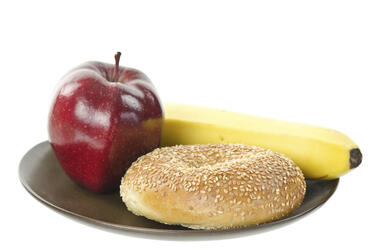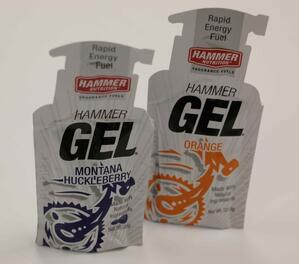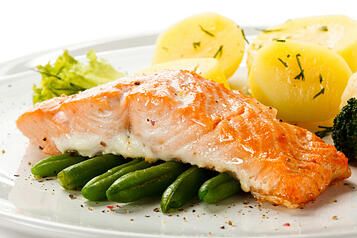 There are so many nutrition bars out there that I am sure it can be a challenge to pick one that is the best. So how do you know if the bar you are choosing is the healthiest option for you? With anything, when it comes to your food and nutrition, the key is moderation and balance. You should be choosing a bar that you like the taste of and that works for your schedule and habits.
There are so many nutrition bars out there that I am sure it can be a challenge to pick one that is the best. So how do you know if the bar you are choosing is the healthiest option for you? With anything, when it comes to your food and nutrition, the key is moderation and balance. You should be choosing a bar that you like the taste of and that works for your schedule and habits.
The goal is to try to eat as many whole, fresh foods as possible and decrease the packaged foods with a giant ingredient list of things you might have trouble pronouncing. However, these bars can be a nice backup to keep in your purse, car, gym bag, or desk drawer for those times when you need fuel and don’t have other options.
Here is a good rule of thumb to follow when it comes to these convenient bars:
Protein: Choose one with at least 5 grams and no more than 15 grams. This will help keep you full, and protein is what makes these bars have more staying power than a regular granola bar or candy bar. Too much protein will make the bar have an unpleasant taste, or more ingredients will be added to cover the added protein taste. Also, this bar is intended to be a snack to hold you over until mealtime and not replace the quality protein you should be getting from meals.
Fiber: Choose one with more than 3 grams. Fiber is another thing that will help to keep you full, so choosing a bar with staying power will help keep you satisfied until your next meal.
Fat: Choose one with mainly heart-healthy fat. Check the label and make sure the saturated and trans fat content is low and the majority of fat is coming from mono or polyunsaturated fats like you would find in nuts.
Carbohydrates: Choose one with mostly whole grains and 15 grams or less from sugar. This can be tricky because a lot of bars have added sugar to make them taste better. Try to steer away from the ones that are a fancy candy bar and choose one that is lower in sugar.
Here are a few bars that meet these requirements:
Was your favorite not on the list? Or did it not meet the requirements? Remember, if you are choosing a nutrition bar occasionally, then it can fit into a balanced diet!
If you have nutrition-related questions or simply struggle to incorporate proper dietary habits into your lifestyle, a Personal Nutrition Coaching (PNC) session may be for you!
This blog was written by Angie Scheetz, RD, Wellness Coordinator. To find out more about the NIFS bloggers, click here.



 Vegans
Vegans If you are like most people, as soon as the fall season arrives, it’s time to get your annual
If you are like most people, as soon as the fall season arrives, it’s time to get your annual 
 One of my favorite holiday traditions is making fabulous treats and snacks for friends, family, co-workers, and neighbors. Entire days are spent baking in the kitchen, and the best part (after sampling the treats first hand) is hearing how great everything tastes. Little do they know that with just a few simple tweaks, those cookies and candies can be dramatically lower in fat and calories. Here are a few easy ways to tweak your recipes for healthy eating.
One of my favorite holiday traditions is making fabulous treats and snacks for friends, family, co-workers, and neighbors. Entire days are spent baking in the kitchen, and the best part (after sampling the treats first hand) is hearing how great everything tastes. Little do they know that with just a few simple tweaks, those cookies and candies can be dramatically lower in fat and calories. Here are a few easy ways to tweak your recipes for healthy eating. Some people think that snacking can sabotage your healthy eating and weight management plan. However, snacking keeps your energy levels up, and prevents you from becoming overly hungry, which can lead to poor food choices. Eating every three to four hours can also help
Some people think that snacking can sabotage your healthy eating and weight management plan. However, snacking keeps your energy levels up, and prevents you from becoming overly hungry, which can lead to poor food choices. Eating every three to four hours can also help  If you are a solo runner or walker, it is likely because you enjoy having that outlet in your day to just be with your thoughts, relieve stress and clear your head. This is a great way to accomplish all of these things, but if you are looking to make some greater strides in your race efforts this year, you may want to consider adding in a few training sessions each week with other people. This will allow you to step out of your comfort zone and push yourself harder than you would when you are training on your own. Along with this, there are many additional benefits that can be accomplished when training with a group. So why should you consider training with others?
If you are a solo runner or walker, it is likely because you enjoy having that outlet in your day to just be with your thoughts, relieve stress and clear your head. This is a great way to accomplish all of these things, but if you are looking to make some greater strides in your race efforts this year, you may want to consider adding in a few training sessions each week with other people. This will allow you to step out of your comfort zone and push yourself harder than you would when you are training on your own. Along with this, there are many additional benefits that can be accomplished when training with a group. So why should you consider training with others? One of the biggest reasons people give as to why they aren’t eating healthy is the cost of foods, specifically fruits and vegetables. However, a study found that adults could eat the recommended servings of produce for $2 per day. Here are some ways that you can save money on your next visit to the grocery store!
One of the biggest reasons people give as to why they aren’t eating healthy is the cost of foods, specifically fruits and vegetables. However, a study found that adults could eat the recommended servings of produce for $2 per day. Here are some ways that you can save money on your next visit to the grocery store!


 We have all heard the phrase that an apple a day keeps the doctor away, but who knew that eating a balanced diet would also make you more productive at work? A study conducted by Brigham Young University and published in Population Health Management Journal, found that 19,000 employees from three large companies with unhealthy diets, were 66 percent less productive than those who ate whole grains, fruits, and vegetables.
We have all heard the phrase that an apple a day keeps the doctor away, but who knew that eating a balanced diet would also make you more productive at work? A study conducted by Brigham Young University and published in Population Health Management Journal, found that 19,000 employees from three large companies with unhealthy diets, were 66 percent less productive than those who ate whole grains, fruits, and vegetables.

